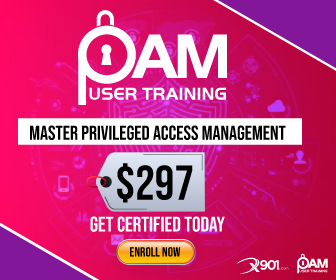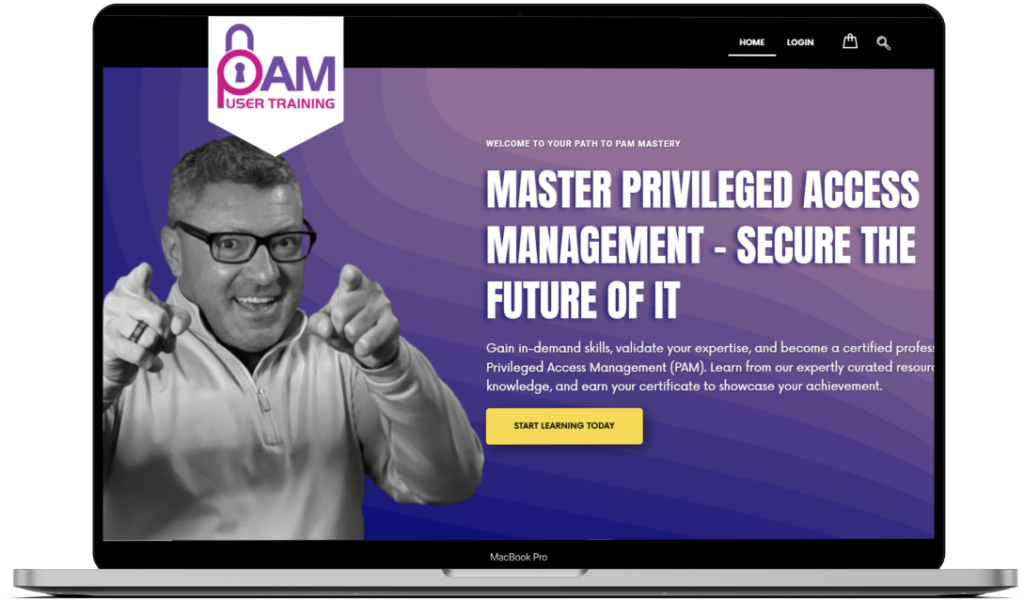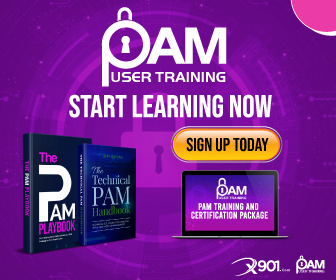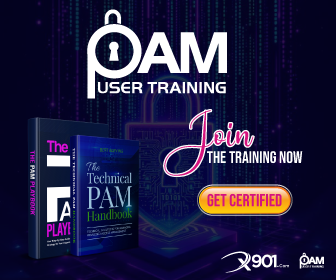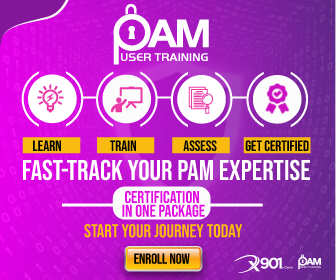Privilege Elevation Basics
Privilege elevation is an integral concept in cybersecurity, pivotal to ensuring that access within an organization is managed securely. It involves the process of granting higher access levels or permissions to users or applications, typically for a limited time and under strict controls. Understanding and managing privilege elevation is essential to protect sensitive data and critical systems from misuse or unauthorized access.
YouTube
Just in Time Permissions Explained #Delinea #PAM #CyberSecurity
What is Privilege Elevation?
- Comprehensive Introduction Privilege elevation refers to the process of providing users or applications with increased access rights or permissions beyond what they normally possess. This access can range from administrative rights to system-level permissions that allow for the execution of higher-level tasks. Privilege elevation is often used to facilitate specific functions such as system configuration, software installation, or troubleshooting that require more rights than standard user permissions provide.
Types of Privilege Elevation:
- Temporary Elevation: Access is granted for a specific time period to complete a task and is revoked once the task is finished. This helps reduce the risk of unauthorized access after the task is completed.
- Permanent Elevation: Access is granted on an ongoing basis, usually for users in roles that require consistent higher-level permissions (e.g., IT administrators). While necessary in some cases, permanent elevation poses greater security risks.
How It Works: Privilege elevation is controlled through security tools and practices that verify the need for increased access and manage the process. This can involve identity and access management (IAM) systems, privilege access management (PAM) solutions, and detailed access policies that ensure permissions are granted in a secure manner.
Why Privilege Elevation Matters
Potential Security Risks Privilege elevation can pose significant security risks if not properly managed. Attackers often target elevated privileges to gain unauthorized access to sensitive data and critical systems, using methods such as phishing, malware, and credential theft. Once they acquire elevated privileges, they can move laterally within the network, escalate their control, and inflict substantial damage.
Consequences of Privilege Misuse:
- Data Breaches: Elevated privileges can give attackers the access they need to exfiltrate sensitive data, resulting in breaches that compromise personal, financial, or proprietary information.
- System Disruption: Unauthorized users with elevated access can alter configurations, delete important data, or disrupt business operations.
- Regulatory Non-Compliance: Many regulations, such as GDPR, HIPAA, and PCI DSS, mandate strict access control measures. Failure to manage privilege elevation effectively can result in non-compliance, leading to legal penalties and reputational damage.
Real-World Implications: Organizations that fail to manage privilege elevation adequately may face severe repercussions. For instance, compromised privileged accounts have been at the center of major cyber incidents, where attackers exploited elevated permissions to gain control over large parts of an organization’s network and steal valuable data or disrupt services.
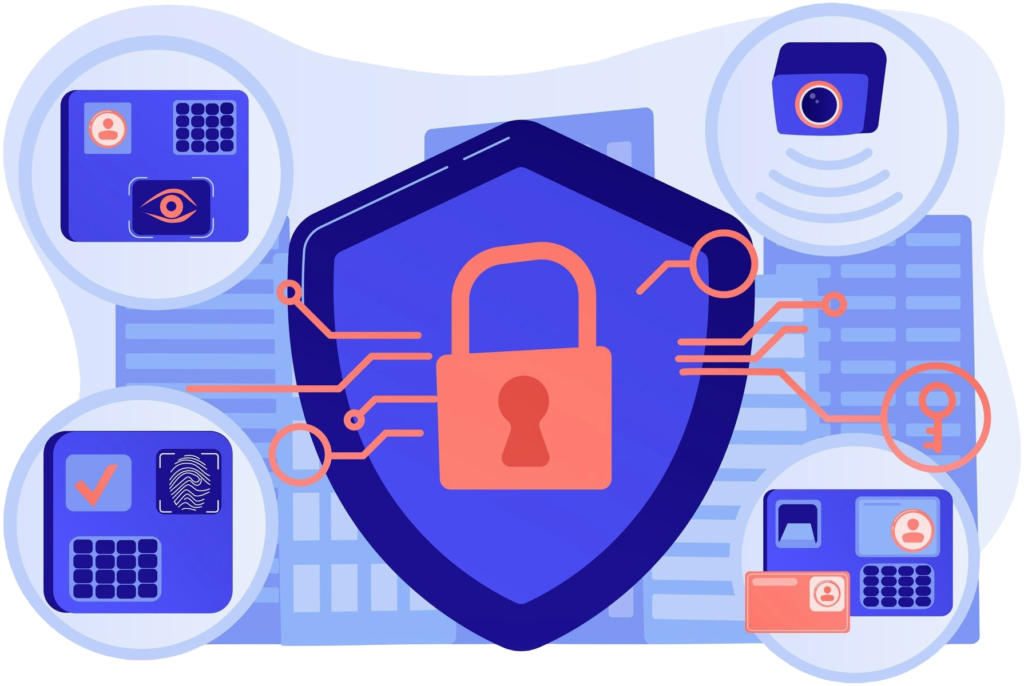
Key Principles of Privilege Elevation
The Principle of Least Privilege is a fundamental security concept that dictates users and applications should only have the minimal level of access required to perform their job functions. This principle helps minimize the potential damage that can result from accidental misuse or the compromise of elevated accounts.
Application of PoLP:
- Access Control: Enforce role-based access controls (RBAC) that ensure users can only access the data and functions necessary for their role.
- Regular Audits: Periodically review and adjust permissions to ensure that elevated access is revoked when no longer needed.
Benefits:
- Reduced Attack Surface: By limiting the number of users with elevated privileges, the organization minimizes opportunities for attackers to exploit those accounts.
- Enhanced Data Security: PoLP reduces the risk of unauthorized data access and tampering.
Just-In-Time access is a privilege management practice that grants elevated access rights on a temporary basis, only for the duration needed to complete a specific task. This approach aligns with Zero Trust principles, ensuring that elevated permissions are used sparingly and responsibly.
How JIT Access Works:
- Automated Workflows: Requests for elevated access are evaluated and approved through automated processes that streamline the allocation of temporary permissions.
- Expiration Policies: Access is automatically revoked after a predefined period, reducing the risk of persistent elevated privileges being misused.
Benefits:
- Limits Unauthorized Access: Reducing the window of time during which elevated permissions are active minimizes the potential for unauthorized use.
- Increased Oversight: JIT access requires active tracking of who is requesting access and why, promoting better accountability.
Monitoring and logging are critical for detecting and responding to the misuse of elevated privileges. Continuous monitoring provides real-time insights into user activities, while logs create an audit trail that can be reviewed for anomalies.
Key Components of Monitoring:
- Real-Time Alerts: Automated alerts for suspicious activities such as unusual login locations, multiple failed login attempts, or sudden changes in user behavior.
- Detailed Audit Trails: Comprehensive logs of privileged actions, including who accessed what data and when, enable organizations to investigate and respond to potential security incidents.
- Integration with SIEM: Security Information and Event Management (SIEM) systems can centralize logs and provide advanced analysis, aiding in the quick detection of privilege misuse.
Benefits:
- Improved Incident Response: Continuous monitoring allows security teams to detect potential threats early and take immediate action.
- Enhanced Compliance: Many regulatory standards require detailed logging of access to sensitive data. Implementing comprehensive monitoring helps meet these requirements and ensures better regulatory compliance.
Conclusion
Understanding and managing privilege elevation is crucial for protecting an organization’s sensitive data and systems. By adhering to key principles like the Principle of Least Privilege, implementing Just-In-Time access, and maintaining robust monitoring and logging practices, organizations can effectively mitigate the risks associated with elevated privileges. These practices help prevent unauthorized access, minimize the impact of potential breaches, and ensure that the organization remains compliant with regulatory standards.
YouTube
OATH OTP MFA Explained: Easy Setup Guide for Stronger Security
Types of Privilege Elevation
Privilege elevation refers to the process by which users or processes temporarily gain higher-level permissions in order to perform tasks beyond their standard access level. This mechanism is essential for maintaining operational efficiency while safeguarding the integrity and security of systems. Privilege elevation is categorized into different types based on its application, purpose, and scope. The main types include user privilege elevation, application and process privilege elevation, and session-based elevation. Below, these types are discussed in detail.

Application and Process Privilege Elevation
Application and process privilege elevation involves granting higher-level permissions to software applications or background processes. This type of elevation is crucial for running specific functions that require elevated access to system resources or data.
Concept and Importance:
Certain applications, such as system utilities, configuration tools, and security software, often need to operate with elevated privileges to perform actions such as modifying system settings, accessing restricted files, or running scripts with administrative rights. While necessary, this type of privilege elevation poses security risks if not properly managed, as malicious software could exploit these permissions to gain unauthorized access.
Key Considerations:
- Controlled Execution: Ensure that only verified applications and processes can request and obtain elevated privileges through digital signatures and trusted certificates.
- Monitoring and Alerts: Implement monitoring solutions that track the behavior of privileged applications and processes, issuing alerts if anomalies are detected.
- Sandboxing: Where possible, run elevated processes within a secure environment to prevent them from affecting the broader system.
- Regular Review: Conduct periodic reviews to ensure that only essential applications are configured to request elevated privileges.
Tools and Technologies for Managing Privilege Elevation
Effective management of privilege elevation is essential for maintaining strong cybersecurity and protecting sensitive data within an organization. Various tools and technologies are available to help streamline and secure the process of granting and managing elevated access. This chapter explores key solutions and their roles in privilege elevation management, providing an overview of their functions and benefits.
Privileged Access Management (PAM) solutions are comprehensive tools specifically designed to manage and control elevated access in an organization. These tools help enforce strict policies, monitor user activities, and ensure that elevated privileges are granted securely and only when needed.
How PAM Solutions Control Privilege Elevation:
- Access Requests and Approvals: PAM solutions often include features for users to request elevated access, which can be automatically or manually approved based on predefined policies.
- Session Monitoring and Recording: PAM tools provide real-time session monitoring, allowing security teams to observe user activity and flag suspicious behavior. This ensures that any actions taken with elevated privileges are logged and traceable.
- Automatic Privilege De-escalation: To prevent unnecessary exposure, PAM tools can be configured to automatically revoke elevated privileges once a task is completed or after a set period.
Popular PAM Tools:
- Delinea (formerly Thycotic and Centrify): Known for its user-friendly interface and robust set of features, including session management, vaulting of credentials, and comprehensive reporting.
- CyberArk: Offers strong protection for privileged accounts through features like credential management, session recording, and threat analytics.
- BeyondTrust: Specializes in privilege elevation management by providing context-aware policies, seamless integration with existing security infrastructure, and detailed audit trails.
- One Identity Safeguard: Known for its flexible deployment options and advanced access control mechanisms, enabling streamlined user and session management.
Benefits of Implementing PAM Solutions:
- Enhanced security posture through centralized control of privileged access.
- Reduced risk of insider threats and external breaches.
- Comprehensive compliance with regulatory standards that require tracking of privileged access activities.
Identity and Access Management (IAM) platforms are critical for managing user identities, roles, and access permissions within an organization. By integrating privilege elevation policies into IAM systems, organizations can enforce more robust access control measures and align privilege management with overall security protocols.
Role of IAM in Enforcing Privilege Elevation Policies:
- Identity Verification: IAM platforms ensure that only authenticated users can request elevated privileges. This prevents unauthorized individuals from exploiting privilege escalation vulnerabilities.
- Role-Based Access Control (RBAC): IAM solutions use RBAC to define roles within an organization, assigning privileges accordingly. This minimizes the potential for users to receive excessive access and ensures that privilege elevation is only granted when aligned with predefined roles.
- Single Sign-On (SSO) Integration: IAM platforms with SSO capabilities streamline the user experience by allowing access to multiple systems with one set of credentials while maintaining secure authentication for elevated access requests.
IAM Tools That Enhance Privilege Elevation:
- Okta: Provides seamless identity verification and supports conditional access policies that can include privilege elevation management.
- Microsoft Azure Active Directory (Azure AD): Integrates robust identity management features with conditional access and RBAC, supporting secure privilege elevation workflows.
- Ping Identity: Offers adaptive authentication methods that include real-time risk analysis to ensure that privilege elevation is granted only to verified and legitimate users.
Advantages of IAM Integration:
- Unified management of user identities and access permissions.
- Enhanced security through consistent application of access control policies.
- Reduced complexity in managing privilege elevation across different systems.
Automation tools play a crucial role in streamlining privilege elevation management by handling requests, approvals, expiration policies, and real-time monitoring without extensive manual intervention. These tools help minimize human errors and improve operational efficiency while ensuring compliance and security.
Functions of Automation Tools in Privilege Elevation Control:
- Auto-Approval Processes: Automation tools can be configured to approve or deny privilege elevation requests based on preset conditions, such as user role, time of day, or type of task.
- Expiration Policies: These tools support the automatic revocation of elevated privileges after a specified duration, reducing the risk of privileges remaining active longer than necessary.
- Real-Time Activity Logging and Alerts: Automated systems monitor privilege use in real time and log all activities for audit purposes. They can also trigger alerts if anomalous behavior is detected during an elevated session.
Examples of Automation Tools for Privilege Elevation:
- Ansible and Puppet: Automation tools that manage infrastructure configuration and compliance, ensuring privilege elevation aligns with organizational policies.
- HashiCorp Vault: Provides secrets management and dynamic credential generation, allowing for secure, time-bound privilege elevation.
- Splunk and SIEM Integrations: Used for automating the monitoring and analysis of privilege elevation logs, enabling faster detection of potential security incidents.
Tips for Configuring Automation Tools:
- Customize Approval Workflows: Tailor workflows to match the security needs of different departments or types of tasks.
- Set Detailed Policies: Ensure that expiration and approval policies are comprehensive and adaptable to various scenarios, maintaining the principle of least privilege.
Leverage Integrations: Combine automation tools with PAM and IAM platforms for a cohesive and powerful privilege management system.
About Me
Bert Blevins is a distinguished technology entrepreneur and educator who brings together extensive technical expertise with strategic business acumen and dedicated community leadership. He holds an MBA from the University of Nevada Las Vegas and a Bachelor’s degree in Advertising from Western Kentucky University, credentials that reflect his unique ability to bridge the gap between technical innovation and business strategy.
As a Certified Cyber Insurance Specialist, Mr. Blevins has established himself as an authority in information architecture, with particular emphasis on collaboration, security, and private blockchain technologies. His comprehensive understanding of cybersecurity frameworks and risk management strategies has made him a valuable advisor to organizations navigating the complex landscape of digital transformation. His academic contributions include serving as an Adjunct Professor at both Western Kentucky University and the University of Phoenix, where he demonstrates his commitment to educational excellence and knowledge sharing. Through his teaching, he has helped shape the next generation of technology professionals, emphasizing practical applications alongside theoretical foundations.

In his leadership capacity, Mr. Blevins served as President of the Houston SharePoint User Group, where he facilitated knowledge exchange among technology professionals and fostered a community of practice in enterprise collaboration solutions. He further extended his community impact through director positions with Rotary International Las Vegas and the American Heart Association's Las Vegas Chapter, demonstrating his commitment to civic engagement and philanthropic leadership. His specialized knowledge in process optimization, data visualization, and information security has proven instrumental in helping organizations align their technological capabilities with business objectives, resulting in measurable improvements in operational efficiency and risk management.
Mr. Blevins is recognized for his innovative solutions to complex operational challenges, particularly in the realm of enterprise architecture and systems integration. His consulting practice focuses on workplace automation and digital transformation, guiding organizations in the implementation of cutting-edge technologies while maintaining robust security protocols. He has successfully led numerous large-scale digital transformation initiatives, helping organizations modernize their technology infrastructure while ensuring business continuity and regulatory compliance. His expertise extends to emerging technologies such as artificial intelligence and machine learning, where he helps organizations identify and implement practical applications that drive business value.
As a thought leader in the technology sector, Mr. Blevins regularly contributes to industry conferences and professional forums, sharing insights on topics ranging from cybersecurity best practices to the future of workplace automation. His approach combines strategic vision with practical implementation, helping organizations navigate the complexities of digital transformation while maintaining focus on their core business objectives. His work in information security has been particularly noteworthy, as he has helped numerous organizations develop and implement comprehensive security frameworks that address both technical and human factors.

Beyond his professional pursuits, Mr. Blevins is an accomplished endurance athlete who has participated in Ironman Triathlons and marathons, demonstrating the same dedication and disciplined approach that characterizes his professional work. He maintains an active interest in emerging technologies, including drone operations and virtual reality applications, reflecting his commitment to staying at the forefront of technological advancement. His personal interests in endurance sports and cutting-edge technology complement his professional expertise, illustrating his belief in continuous improvement and the pursuit of excellence in all endeavors.

